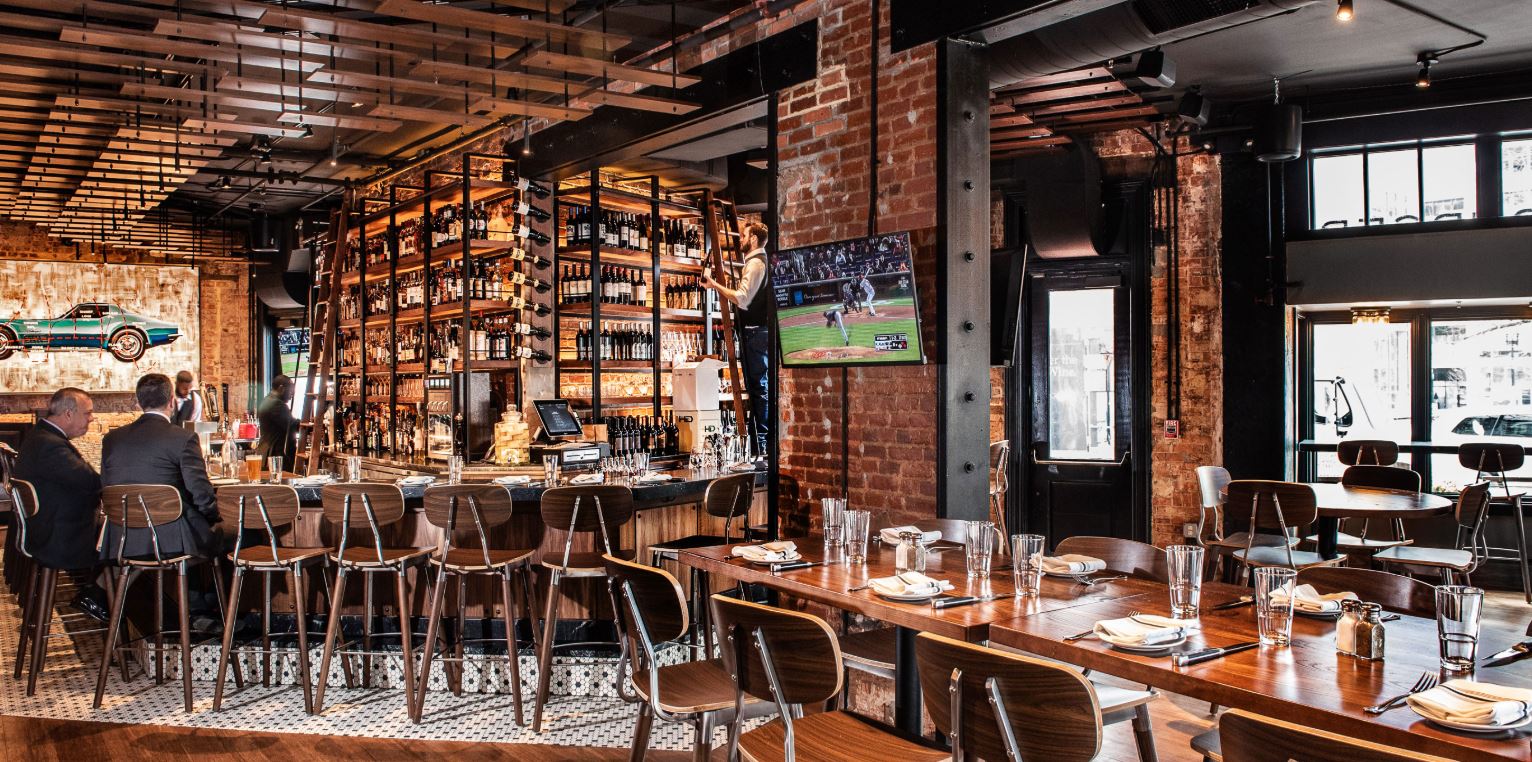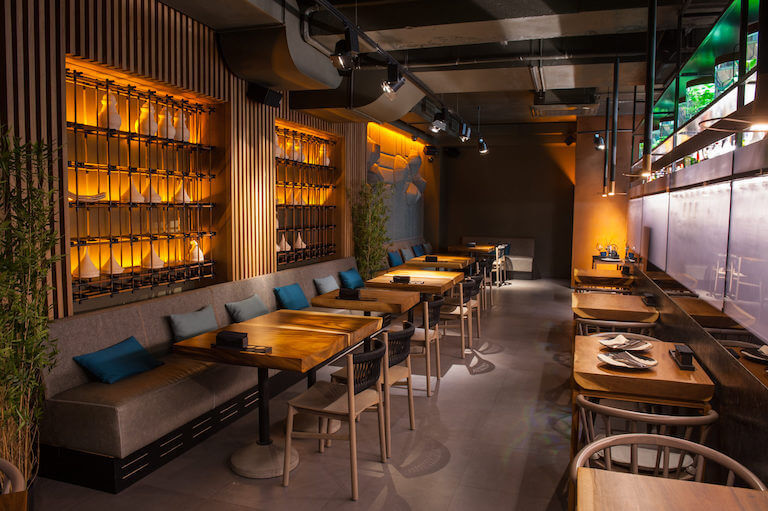Savor Authentic Asian Cuisine With a Pan-Asian Twist for a Cooking Journey
Beginning on a cooking journey with authentic Oriental food, enhanced with a Pan-Asian twist, provides a special chance to check out the abundant tapestry of tastes that define the region's diverse cooking customs. As you ponder these luring meals, take into consideration the social narratives and historic impacts that form them, each bite using a tale waiting to be discovered. asian restaurant isb.

Discovering Pan-Asian Tastes
In the realm of international gastronomy, Pan-Asian cuisine stands out for its impressive diversity and the harmonious interplay of flavors from different Eastern societies. This cooking technique commemorates the unique ingredients and rich traditions found throughout the continent, creating a tapestry of preferences that is both gratifying and intriguing. Secret to Pan-Asian cuisine is its capability to stabilize contrasting tastes-- pleasant, salted, spicy, and sour-- while highlighting the freshness and quality of each active ingredient.
From the umami-rich soy sauce of Japan to the fiery chili peppers of Thailand, Pan-Asian food uses a comprehensive palette of flavors. These aspects are frequently integrated in creative methods, boosting meals with layers of intricacy. For example, making use of great smelling herbs such as lemongrass and cilantro, typical in Vietnamese and Thai food, adds a refreshing brightness to dishes, while the unification of coconut milk provides a luscious, abundant texture.
The emphasis on fresh fruit and vegetables and aromatic flavors makes certain that each meal is not only a banquet for the palate however also for the senses. Pan-Asian cuisine invites restaurants to start a culinary journey, checking out the vast and varied landscapes of Asian gastronomy with every bite.
Combination Recipes to Attempt
While Pan-Asian cuisine is commemorated for its typical tastes, the modern cooking landscape is progressively welcoming combination recipes that mix these timeless components with influences from various other regions. This cutting-edge approach not just honors the rich heritage of Asian cooking arts however also introduces novel taste experiences that appeal to modern palates.
An archetype of such a fusion recipe is the Korean-Mexican taco, where marinated bulgogi beef is wrapped in a warm tortilla, covered with kimchi and a hot gochujang-infused salsa. This mix weds the strong, mouthwatering flavors of Korea with the dynamic, fresh elements of Mexican food. Likewise, sushi burritos have actually obtained appeal, amalgamating the fragile virtuosity of Japanese sushi with the hearty, hand-held convenience of a burrito, often including fusion components like tempura shrimp and avocado with a drizzle of wasabi mayo.
One more noteworthy meal is Thai curry ramen, which infuses the creamy, fragrant flavors of Thai curry into the soothing broth of conventional Japanese ramen, producing an unified blend that tantalizes the detects. These blend meals extend past plain uniqueness; they represent a cooking discussion in between cultures, urging expedition and advancement on the planet of Pan-Asian food.
Necessary Components and Spices
To genuinely appreciate Pan-Asian cuisine, one should understand the essential components and flavors that create its structure. This diverse culinary design attracts from an abundant tapestry of Eastern traditions, employing a harmonious blend of structures and flavors. Trick ingredients consist of soy sauce, fish sauce, and oyster sauce, which pass on a tasty umami deepness necessary to Asian recipes. Corresponding to these are rice vinegar and mirin, lending a fragile level of acidity and sweetness.
Fragrant elements are critical, with ginger, lemongrass, and garlic being common across different Pan-Asian recipes. These ingredients provide a fragrant base that boosts the complexity of tastes. Flavors such as celebrity anise, cardamom, and cinnamon introduce heat and personality, resembling impacts from regions like China and India.

Food Preparation Methods and Tips
Mastering the art of Pan-Asian cuisine needs knowledge with its unique food preparation methods, each contributing to the lively tapestry of tastes this cooking custom is commemorated for. Central to these approaches is the stir-fry, a quick cooking technique that protects the nutritional honesty and brilliant shades of components. Utilizing a frying pan, the stir-fry method enables even warmth circulation, essential for accomplishing the particular texture and flavor balance of Pan-Asian recipes.
Another essential method is steaming, specifically prevalent in Chinese cuisine. This mild method maintains the natural flavors and nutrients of components, making it perfect for fish and shellfish and veggies. Dumplings, a cherished staple, often take advantage of steaming, resulting in soft, succulent textures.
Cooking, additionally essential, gives great smoky midsts to meals such as Korean bulgogi or Japanese yakitori (Best ambiance restaurants Islamabad). This method typically involves marinading active ingredients, allowing flavors to pass through deeply before cooking over an open fire or warmer
Finally, grasping the art of stabilizing flavors-- sweet, sour, salty, bitter, and umami-- is critical. Appropriately layering these components can raise a dish from average to remarkable, using a facility and satisfying cooking experience that symbolizes the essence of Pan-Asian cuisine.
Eating Experiences Worldwide
Around the world, Pan-Asian food offers an unmatched eating experience, commemorated for its abundant tapestry of tastes and lively discussions. This cooking sensation has actually transcended social borders, recording the hearts and tastes buds of food enthusiasts worldwide. In multicultural cities like New York, London, and Sydney, Pan-Asian dining establishments act as melting pots where culinary practices from Thailand, Japan, China, and past converge, giving diners with a diverse mix of recipes that highlight the region's diversity.
The global charm of Pan-Asian cuisine lies in its capacity to use both authenticity and innovation. Cooks skillfully wed standard ingredients such as lemongrass, soy sauce, and miso with contemporary techniques, causing meals that are both acquainted and refreshingly brand-new. This combination allows restaurants to embark on a culinary trip that appreciates heritage while embracing modernity.
Moreover, eating experiences are boosted with thoughtfully created settings that show the ethos of Pan-Asian looks. From minimal Japanese-inspired insides to dynamic Thai-themed rooms, each restaurant uses a special ambiance that complements the cooking offerings. As a result, customers are not merely eating a meal however partaking in a cultural experience, making Pan-Asian dining an absolutely global sensation.
Conclusion
The exploration of Pan-Asian food provides an extensive understanding of the intricate interaction of tastes and culinary traditions throughout Asia. By accepting Fine dining experience Islamabad blend recipes such as Thai curry ramen and sushi burritos, the culinary trip not just highlights the adaptability of conventional active ingredients however additionally showcases innovative modern-day strategies. This gastronomic experience, improved by essential spices and cooking methods, supplies an unique opportunity to appreciate the cultural diversity and culinary artistry that specify Pan-Asian food on a global scale.
Beginning on a culinary trip with authentic Asian food, enhanced with a Pan-Asian twist, provides an one-of-a-kind possibility to discover the abundant tapestry of tastes that specify the area's diverse cooking practices.In the realm of worldwide gastronomy, Pan-Asian food stands out for its exceptional diversity and the unified interaction of flavors from numerous Eastern societies. Key to Pan-Asian food is its capacity to balance contrasting tastes-- wonderful, salty, spicy, and sour-- while highlighting the quality and high quality of each ingredient.
